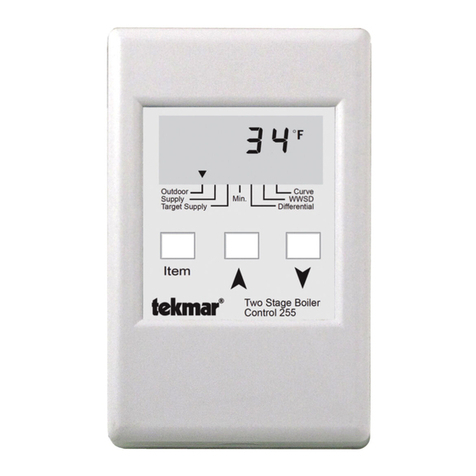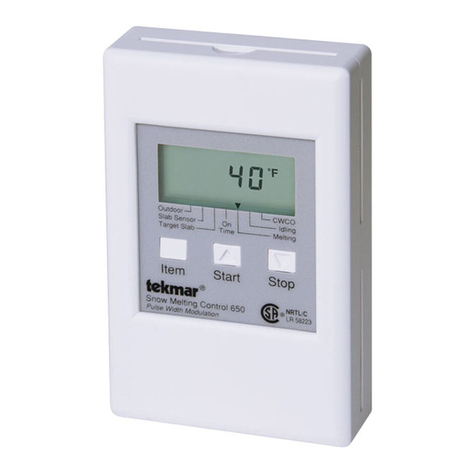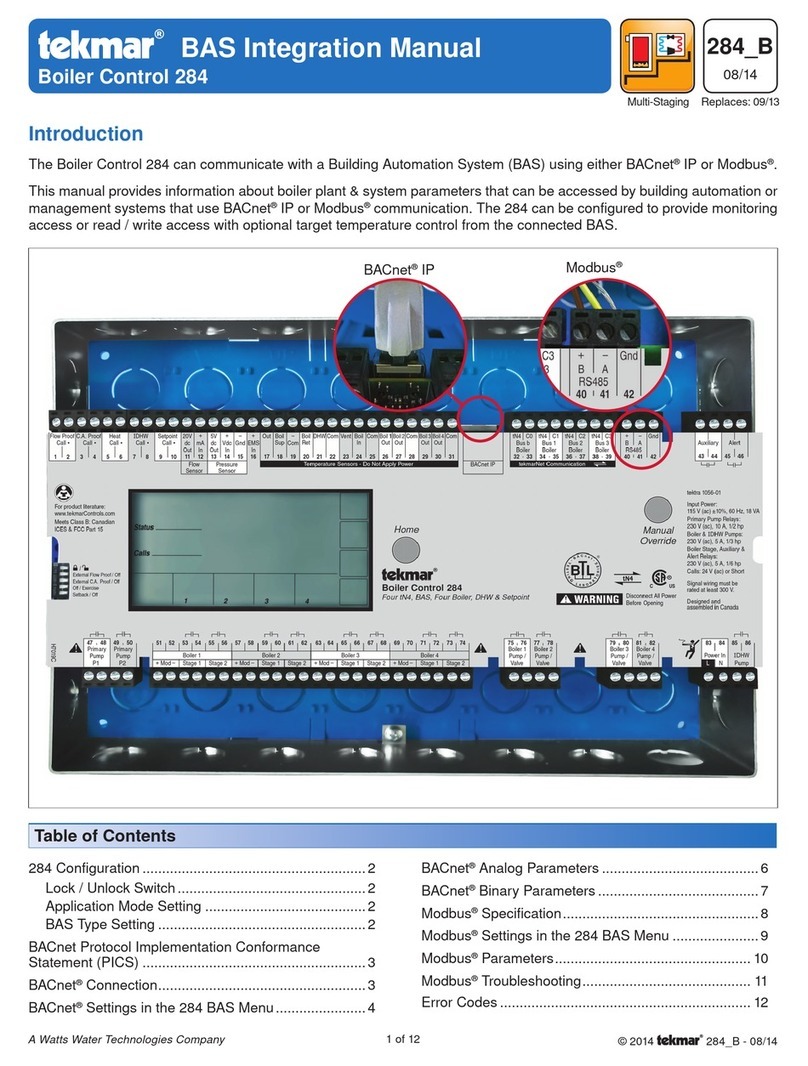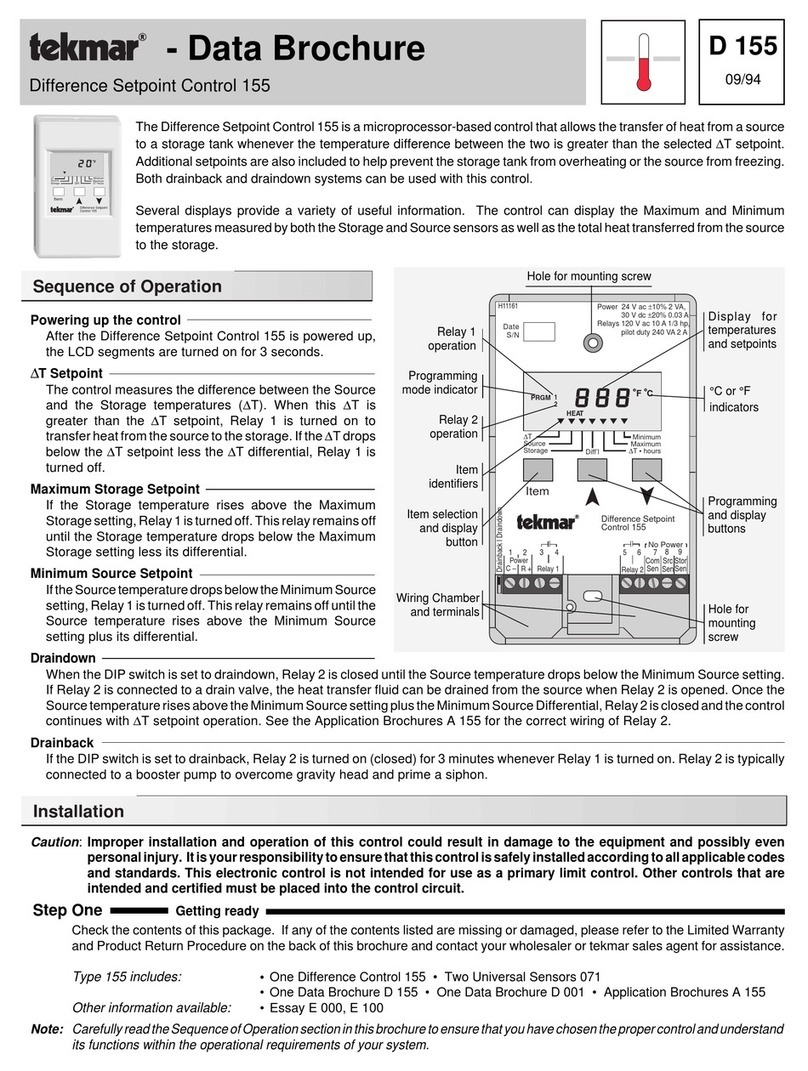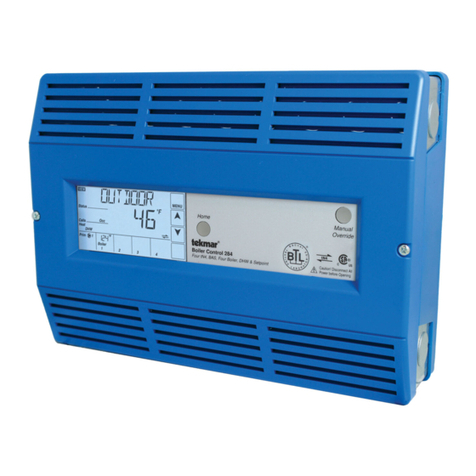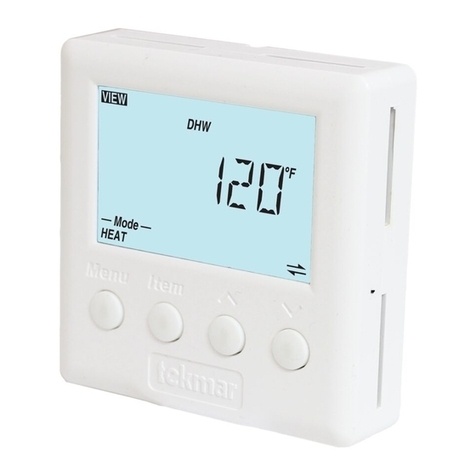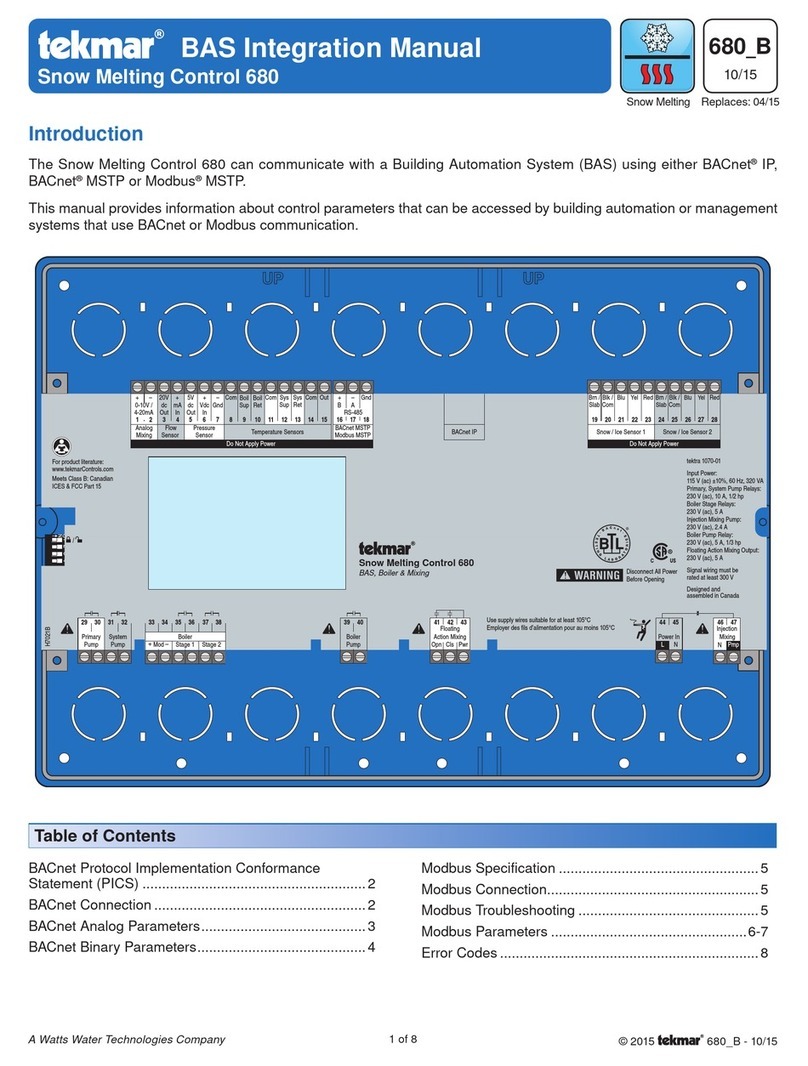
Test the outputs
If a Pump circuit is connected to the
Pump
(5 and ) terminals, make sure power to the circuit is off and install a jumper in the
terminal plug between terminals 5 and . When the circuit is powered-up, the pump should operate.
If it does not come on, check the circuit wiring for errors and ensure that it is powered up and the voltage is correct. Check the
devices in the circuit (pump, switching relay, etc.) for faults.
If the pump operates properly when the circuit is powered up disconnect
the power, remove the jumper and proceed to the next step.
Note: When a Return Sensor 071 is used, the boiler loop pump must operate with the pump See Brochures A 354
If you are using the control to operate the boiler, make sure power to the boiler circuit is off and install a jumper in the terminal
plug between the
Boiler
(10 and 11) terminals. When the circuit is powered-up, the boiler should operate. If it does not come
on, check the circuit wiring for errors and ensure that it is powered up and the voltage is correct. Check the devices in the circuit
(limits, flow switches, etc.) for faults.
If the boiler operates properly when the circuit is powered up, disconnect the power, remove
the jumper and proceed to the next step.
Make sure power to the Actuating Motor circuit is off and install a jumper in the terminal plug between the
Com Mix — Opn Mix
(7 and 8) terminals. When the circuit is powered-up, the valve should open. If it does not open, check the circuit wiring for errors
and ensure that it is powered up and the voltage is correct. Check the valve to make sure it is not jammed or already fully open.
If the valve closes instead of opens, reverse the motor OPEN and CLOSE wiring.
If the valve operates properly when the circuit
is powered up, disconnect the power, remove the jumper
and install it in the terminal plug between the
Com Mix — Cls Mix
(7 and 9)
terminals. When the circuit is powered-up, the valve should close. If it does not close, check the circuit wiring and valve operation
as described above.
Disconnect the power, remove the jumper and proceed to the next step.
Connect the control
• Turn the power off and make sure all test jumpers have been removed from the plugs
• Connect the plugs to the control by carefully aligning them with their respective headers and pushing them upwards into the
headers. The plugs should snap firmly into place.
• The control is now ready for set-up and operation.
Caution
The tekmar Mixing Control 354 is an operating control and is not certified or intended for use as a safety device Under
no circumstances should safety limit devices be left disconnected after installation of this control The installer shall
check all applicable code requirements and obtain necessary inspections to ensure that the installation is in
compliance with those requirements
Step Five Testing the wiring
Caution
These tests are to be performed using standard electrical testing practices
and procedures and should only be carried out by properly trained and
experienced persons
Before applying power to the control for testing, each terminal plug must be
unplugged from its header on the control Pull straight down to unplug
A good quality electrical test meter, capable of reading from at least 0 — 200
Volts AC, and at least 0 — 1,000,000 Ohms, is essential to properly test this
control
Test the sensors
These test must be made
before
turning on the power supply, and with the terminals
unplugged. The sensors are to be tested according to the instructions in brochure
D 001. If a tekmar RTU or Zone Control is used, check the applicable data brochure
for the product used.
Test the power supply
Make sure exposed wiring or bare terminals are not in contact with any other wires or
grounded surfaces. Turn on the power to the transformer and use an AC voltmeter
to measure the voltage between terminals
C — R
(3 and 4). Between 22 and 2 Volts
AC should be measured at these terminals.
Test the powered inputs
If an external Heat Demand signal is used, power up the Heat Demand circuit and
supply a Heat Demand signal to the control. Use an AC voltmeter to measure the
voltage between terminals
Heat Dem — Heat Dem
(1 and 2). Between 22 and 2
Volts AC should be measured at these terminals.
7
13
14
15
17
1
18
19
20
2K
RTU
Sup
Sen
Ret
Sen
Uno
Sw
10K
Sen
Com
Sen
Out
Sen
12
Com
Sen
Com
Sen
Terminal plug disconnected
from its header on the control
Terminal plug pushed into
its header on the control
13
14
15
17
1
18
19
20
2K
RTU
Sup
Sen
Ret
Sen
Uno
Sw
10K
Sen
Com
Sen
Out
Sen
12
Com
Sen
Com
Sen


